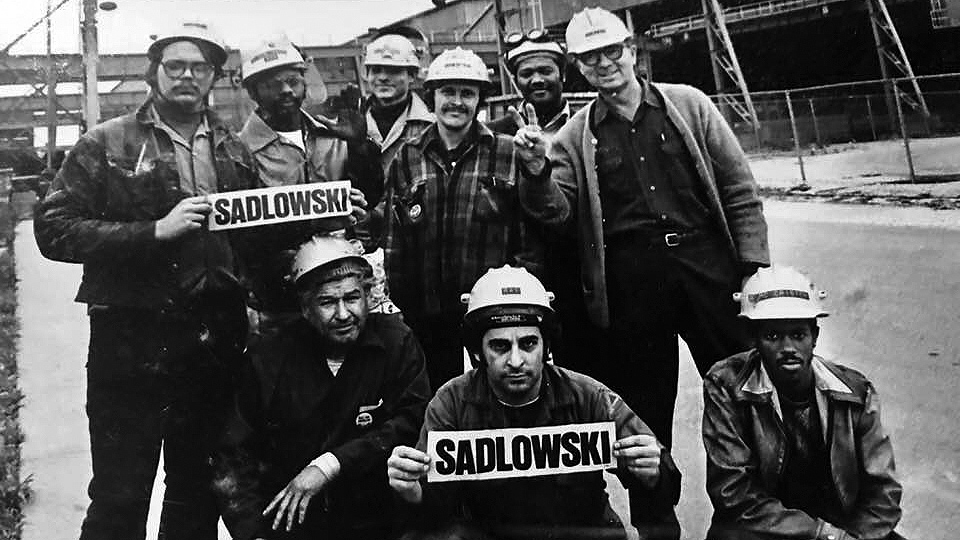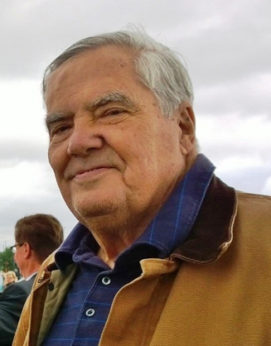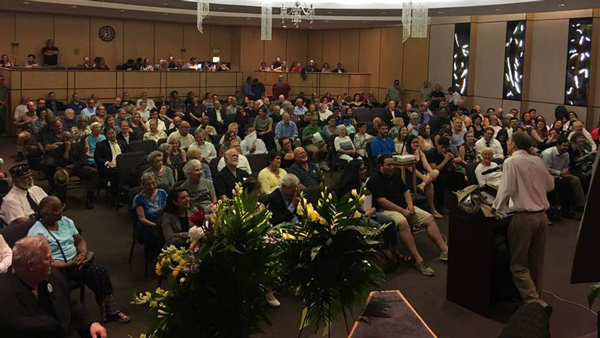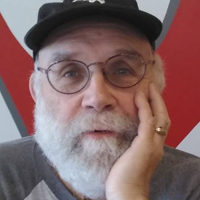
I was barely 21 when I first met Ed Sadlowski. Al Samter, a U.S. Steel coke oven worker with a long history of struggle in the mill and the union, asked me if he could bring Ed over to talk to me about his campaign to run for director of District 31 of the Steelworkers. At that time, there were over a million steelworkers in the union. The district which covered the Gary-Chicago area, District 31, was the largest.
Workers were upset that the union leadership had signed an agreement with the steel companies giving up the right to strike. The workers were also upset by a then-recent dues increase that came along at the same time as this new contract, an agreement which was seen as a surrender of labor’s basic right to withhold our labor. Most importantly, the voices of Black, Brown and women workers were absent from the national leadership.
Al was a veteran of union struggles. He was a former Bronx New Yorker who, as a young newlywed communist, had moved to Gary in 1949 to be a union activist.

Al brought Ed, 12 years my senior, to my apartment in Gary one summer evening. I remember thinking that Ed, who at the time was an overweight staff representative for the union, was the stereotypic fat cat union rep. However, he talked the talk of trying to change the union and take out the same people who had run the district for the 30 years since the union’s inception.
I was spellbound as Ed’s rap touched a nerve in me. I was a young new union representative at a shop full of young people at a plant that was the newest built basic steel mill in the U.S. – Bethlehem Steel’s Burns Harbor, Indiana plant. It remains the last basic steel mill built in the U.S. making steel with coke ovens and blast furnaces and finishing it in rolling mills.
Like Ed’s father, my grandfather helped build the union. He had been a staff representative for the same district that Ed was trying to lead. My grandfather warned me to stay away from Ed because, he said, he hung out with communists. Ed convinced me to join the cause of changing the union by taking it over. “You CAN beat City Hall,” he was fond of saying. He used to tell me that when you were a union rep you had to stay on the side of the angels. He said that some guys would sell out the members over a steak when the boss took them out to dinner.
Like me, hundreds of steelworkers became convinced that change was possible. We went into action around the district to organize for the Sadlowski campaign, a movement which became bigger than Ed himself. Ed slimmed down for the campaign struggle, working out with his son in the basement of his East Side Chicago home.
Organizing for the February 1973 election was fast and furious. It was done out of South Chicago at a campaign office down the street from the U.S. Steel Local 65 hall where Ed was once the president and where he got his nickname “Oil-Can Eddie.” It was a hall that was named after Hilding Anderson, a 29-year-old known as a red in some circles. Hilding Anderson, along with nine others, was killed by the police at the 1937 Memorial Day Massacre.
My local was one of the first to nominate Ed to get him on the ballot, and the local’s election vote also went for him. However, the election was fraught with corruption. Ed was declared the loser by a narrow margin. He immediately filed a federal law suit which was settled with a federally supervised election held in November 1974.
Organizing continued after the loss in ’73. The momentum built by all the new people energized by the first campaign made for a landslide win in the rematch between the “official” candidate, Sam Evett, and Ed. Leading this organizing, as in the first match, were Jim Balanoff from Inland Steel’s Local 1010, Jim’s brother Clem, Ola Kennedy, Curtis Strong, one of the first African Americans appointed to the USWA staff, Cliff “Cowboy” Mezo, also from 1010, a fresh young Pennsylvania attorney, George Terrell, and an assortment of old and young union activists, men and women, Black and Brown.
Rank and file caucuses eventually sprung up in local unions across District 31 which spanned metropolitan Chicago through Indiana, from Hammond, East Chicago and Gary to South Bend. A compilation of many of those local organizations was even formed later on, called the Indiana Steelworkers Caucus.
Immediately after Ed was elected director, the campaign for the 1977 USWA international president began. The rank-and-file energy of the district campaign, “Steelworkers Fightback,” spread across the U.S. and Canada. The national campaign brought in old union activists like George Edwards from Cleveland and young ones too, like Bruce Bostick at U.S. Steel in Lorain, Ohio. It took money raised at endless mostaccioli dinners and celebrity events across the country.
But before the 1977 International officer election, there were the local union elections and a Constitutional Convention in 1976 to be fought over. The idea that the old guard’s defeat could bring needed change to the union’s internal structure to allow for more diverse representation and more democracy was spreading like wildfire across North America. The campaign garnered national press attention with articles in The New York Times and even a controversial interview with Ed in Penthouse magazine which included the line about the international president’s salary: “No SOB is worth $60,000.” The controversy came about because a handful of workers in my plant were making that much, but they knew what Ed was really saying, because almost all steelworkers were making much less.

Based on the movement, the 1976 local union elections brought many new faces to the union leadership, like Bill Andrews and Mike Olszanski at Local 1010, including my election for Local 6787 president. Ed had been convinced by George Troy, who became financial secretary of our local, and me one night in Chicago to give a written endorsement of our slate in that election. Those new leaders and the rebel old ones went to the convention in Las Vegas to try and change the union. A lot of hell was raised on the convention floor in Las Vegas from locals across the country. The stage was set for the January election the following year.
Sensing this surge of opposition and responding to the pressure, the “Official Family” added another vice president position to the Board which they filled with Leon Lynch, an African American union representative who had originated in District 31.
Campaigning by Ed took on a scope larger than running for president of the U.S., since the Union spanned not only coast to coast but also Canada. But the election was lost. Many involved in the campaign felt it was stolen in Canada.
The narrow loss of “Steelworkers Fightback” did not stop the push for reform in the union. Women such as Roberta Wood and Alice Peurala, both of Local 65, became more involved and formed an active Women’s Caucus. Alice was elected president of Local 65, the first woman to head a basic steel local. Eventually, the right to vote on the contract was won and women were elected to international offices of authority. The Steelworkers Union was 1.5 million strong at the time of the Sadlowski presidential bid. Although smaller today, it still elects its international officers by membership ballot.
Ed Sadlowski was a great union leader who kept on fighting for justice in labor and in the world up until the very end.
I would run into Ed all over the Chicago area at various protests and even at a labor history tour of Chicago. We were at one of the Steelworker rallies for steel against imports and he told me that tariffs were no good for the worker. Tariffs, he said, raised the price on everything and it just cost workers more to live. One of the last times I spent some time with Ed was during the 2008 Obama election. We took the good part of a day campaigning going door to door for Obama in Gary.
Ed Sadlowski was a different leader, ahead in his time – opposing the war in Vietnam, tariffs and favoring a more democratic union. His candidacy inspired many to a life of union action way beyond his original campaign.
For more information on the history of the Steelworkers Fightback campaign checkout the magazine published by Indiana University History and Labor departments on the subject online at:
https://www.slideshare.net/MikeOlszanski/fight-back-complete-optimised-pdf-12
Paul S. Kaczocha is a nearly-retired steelworker of 48 years










